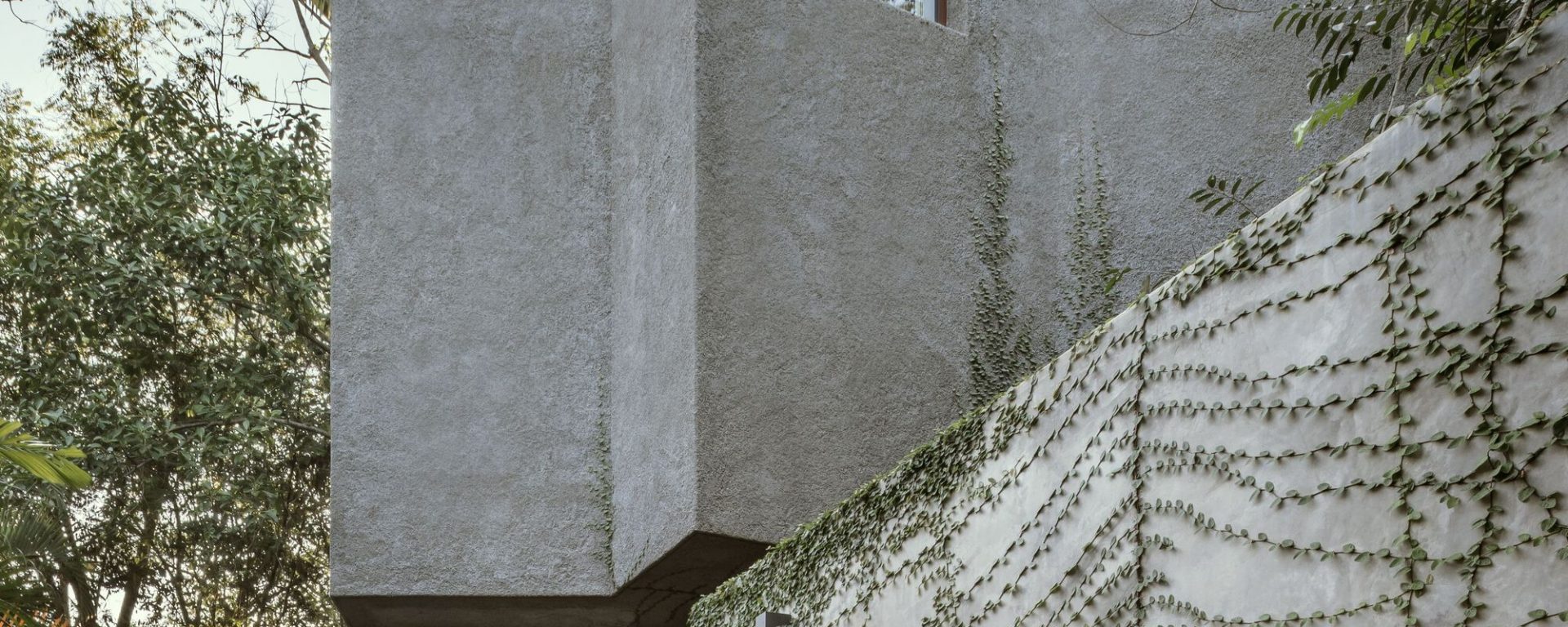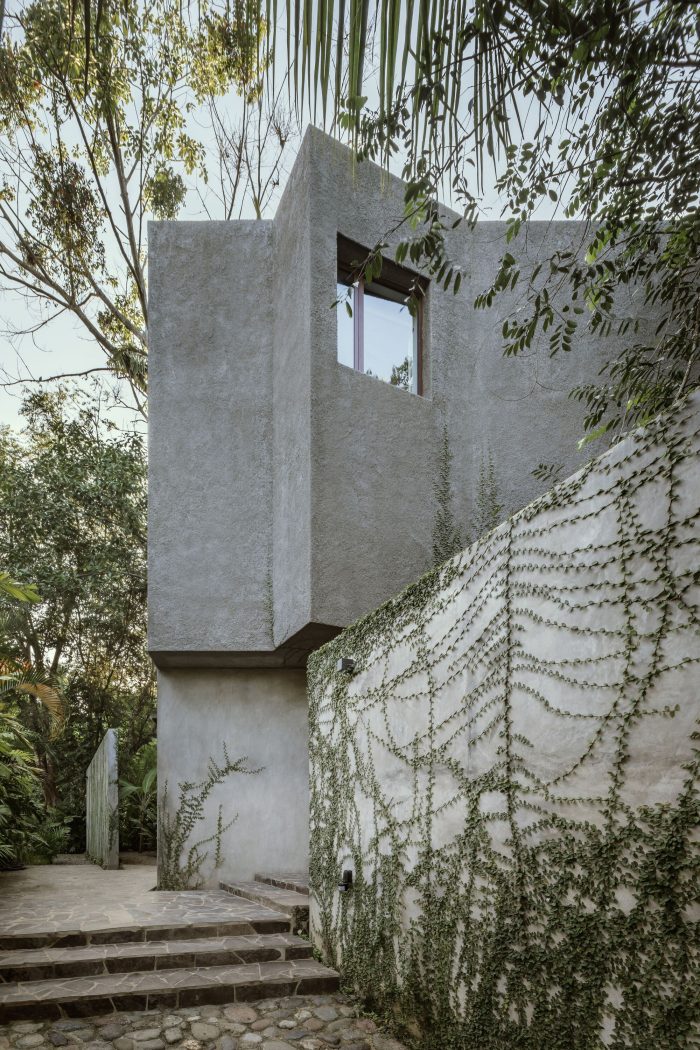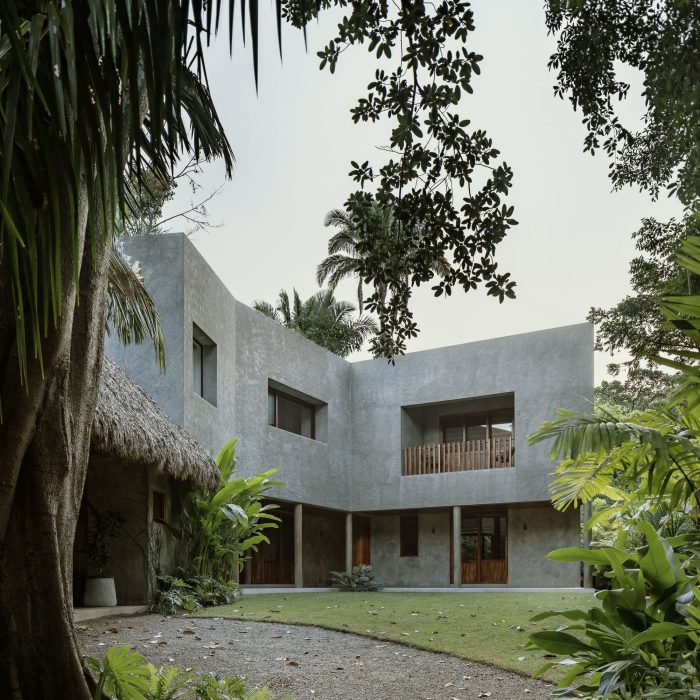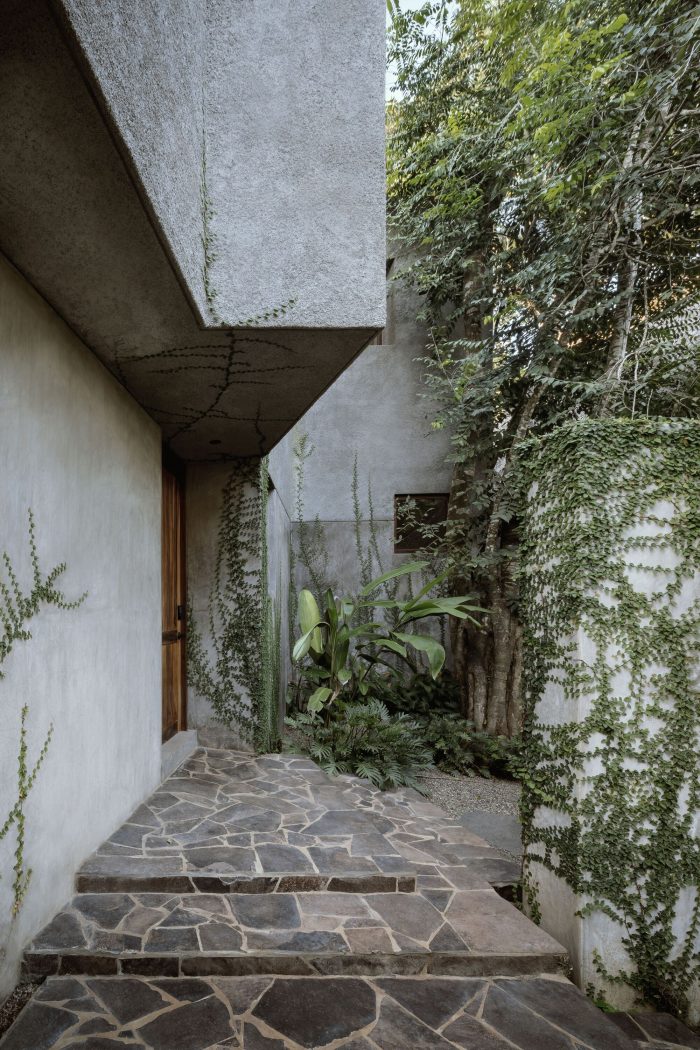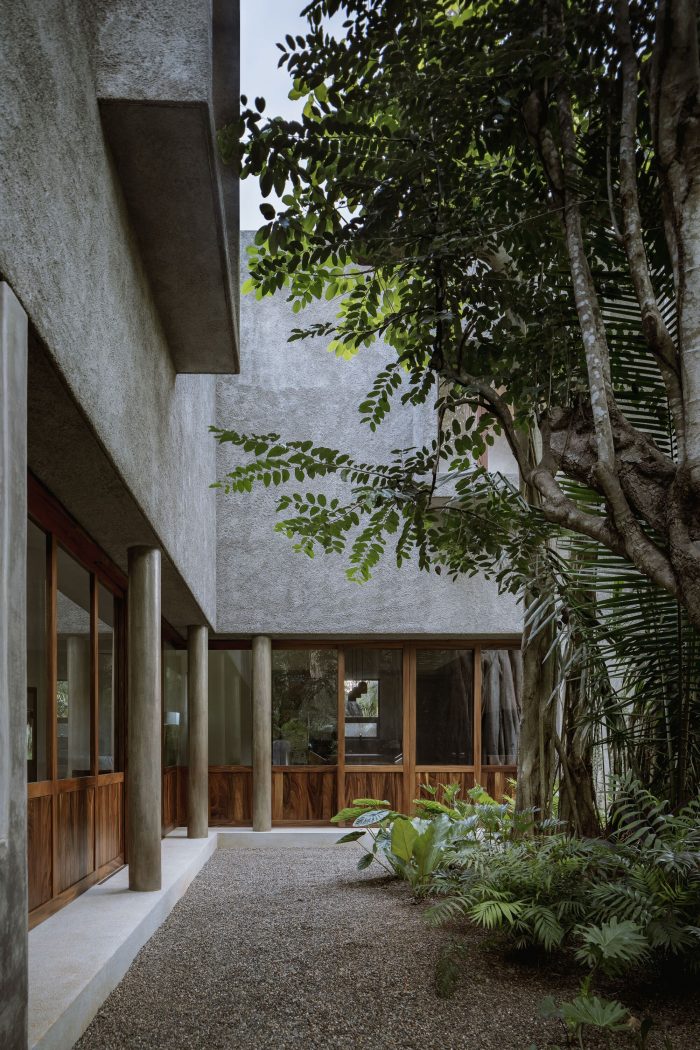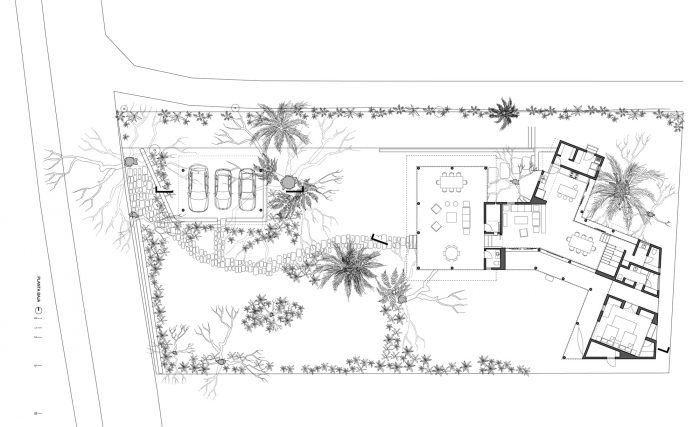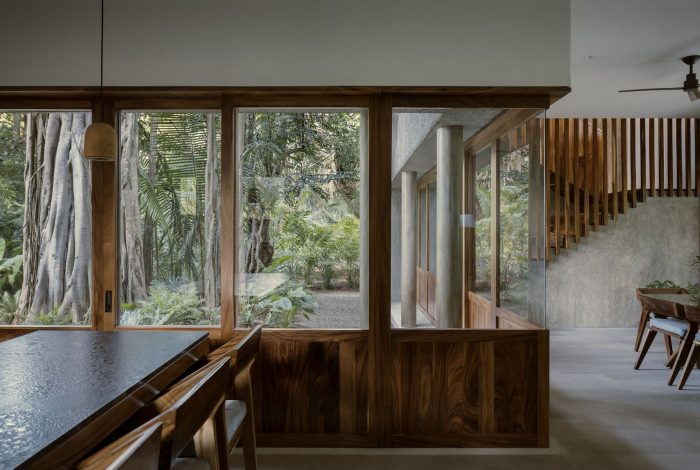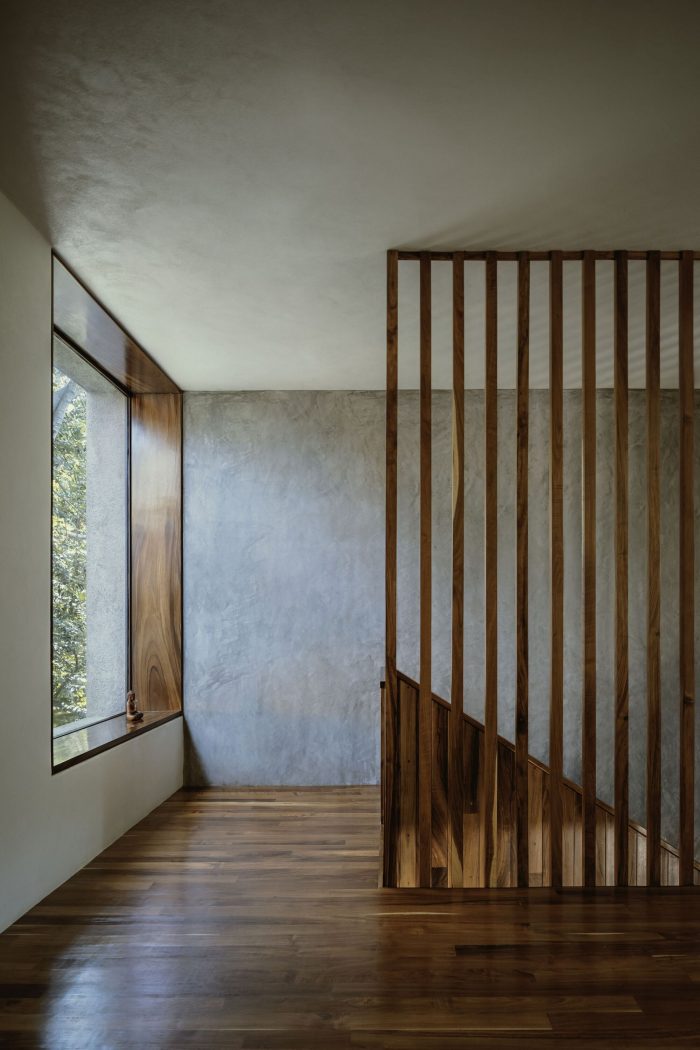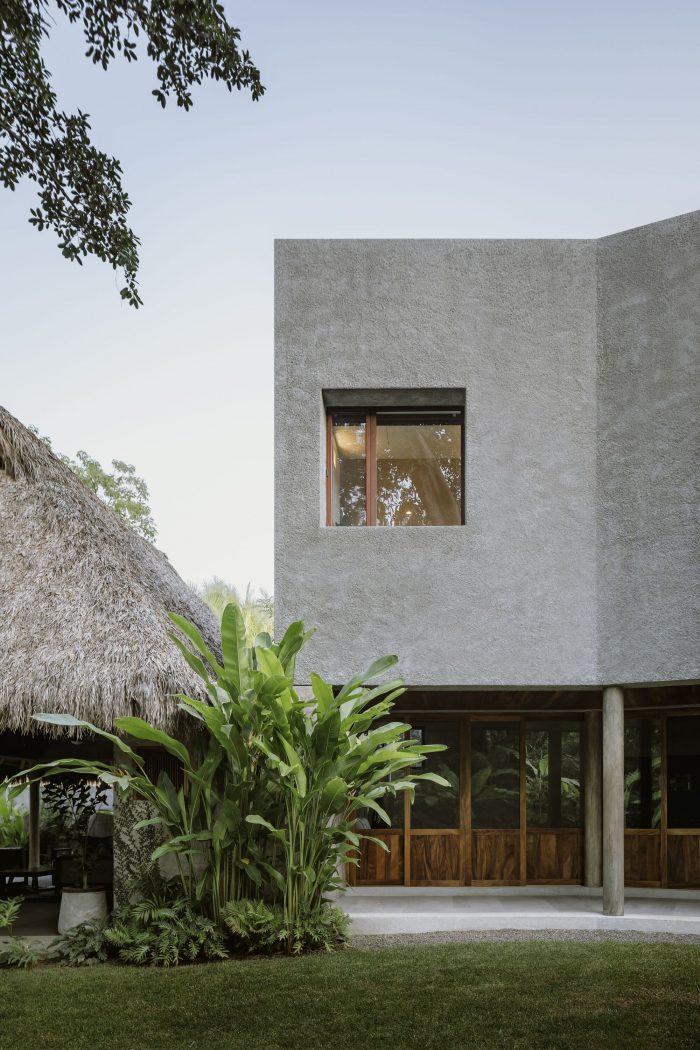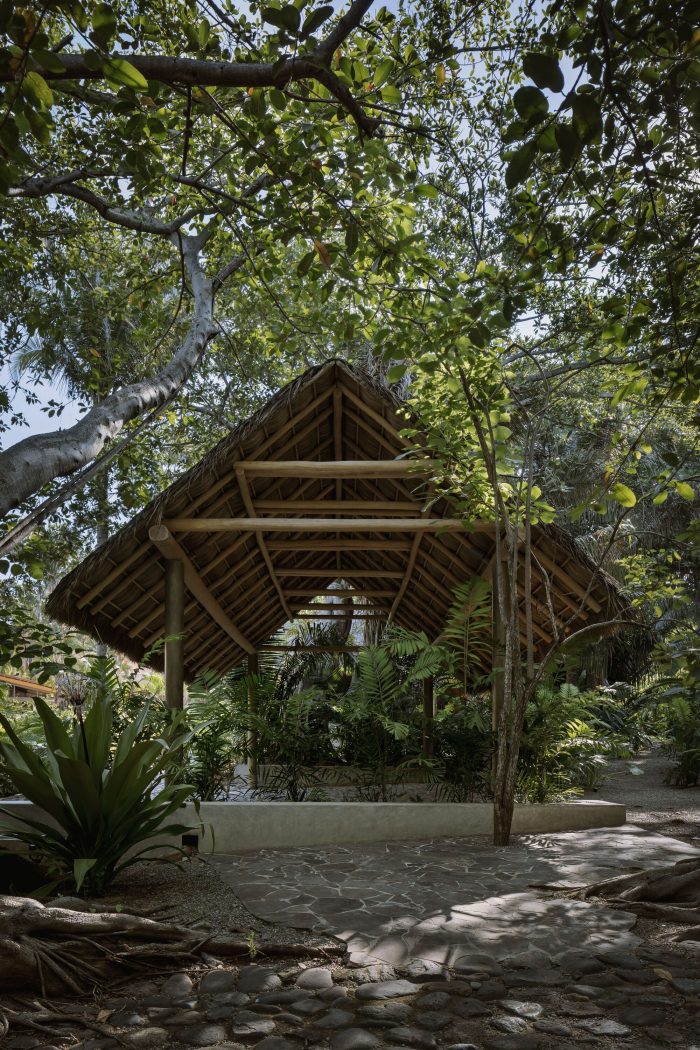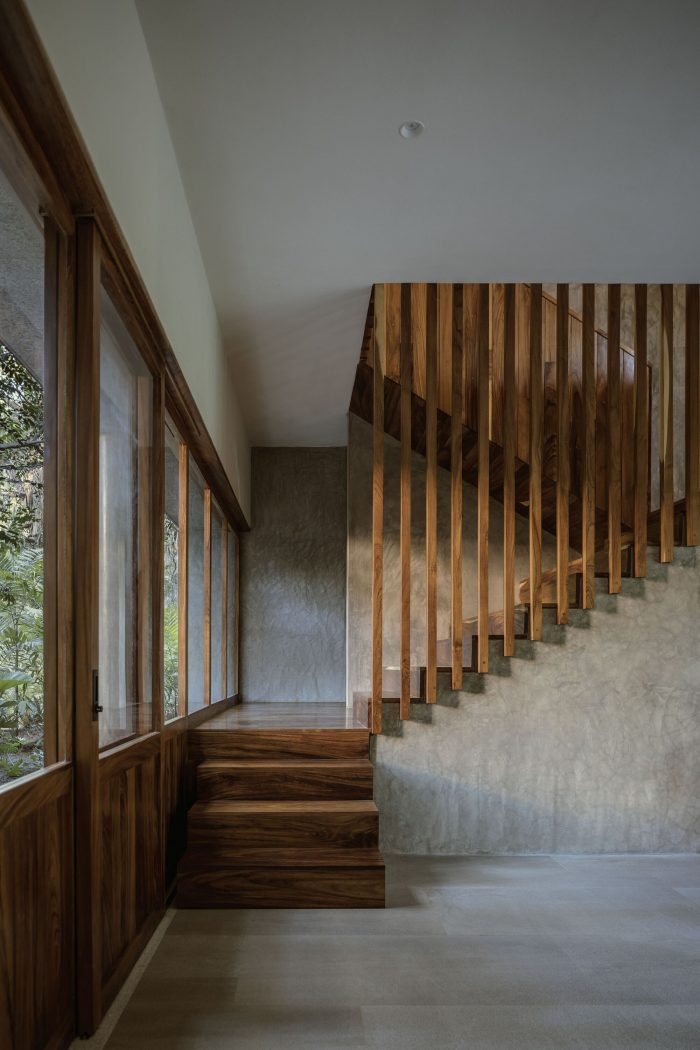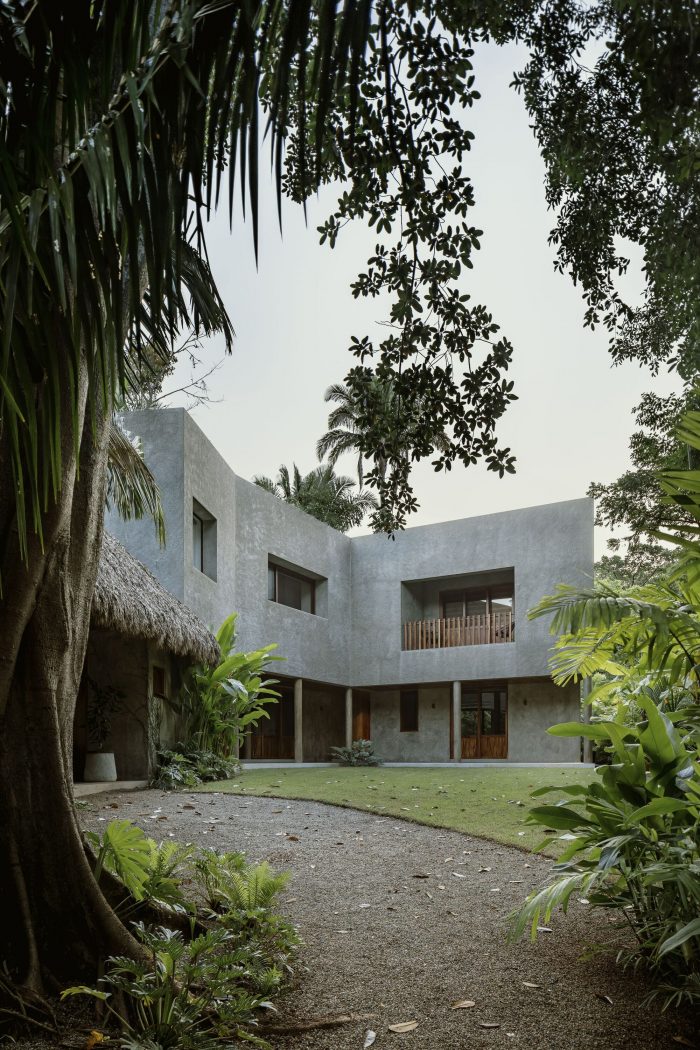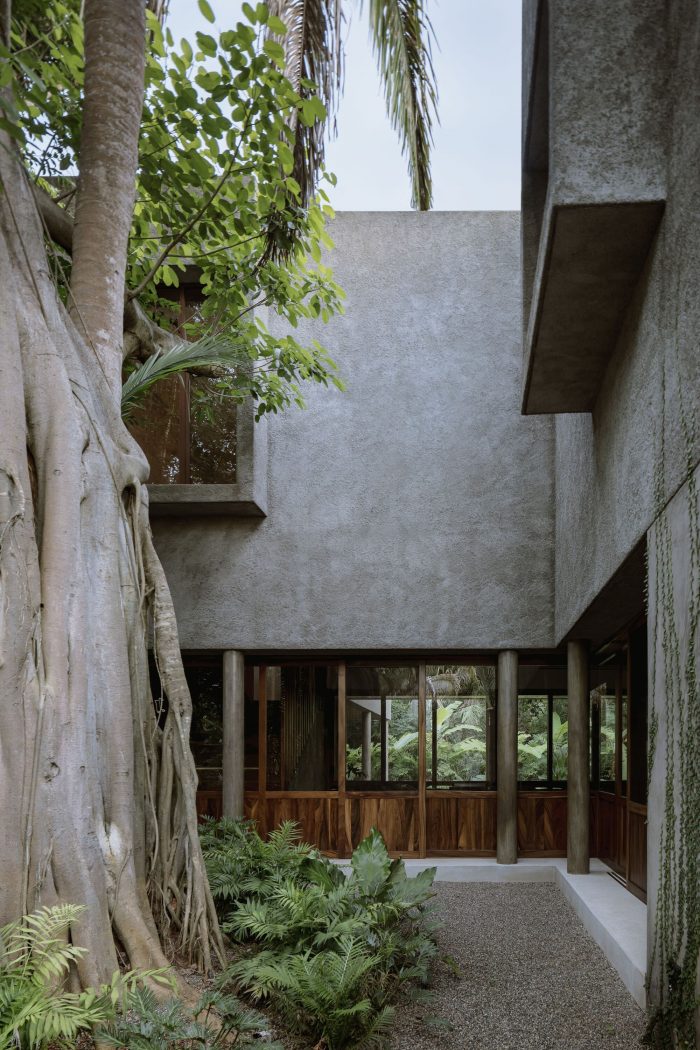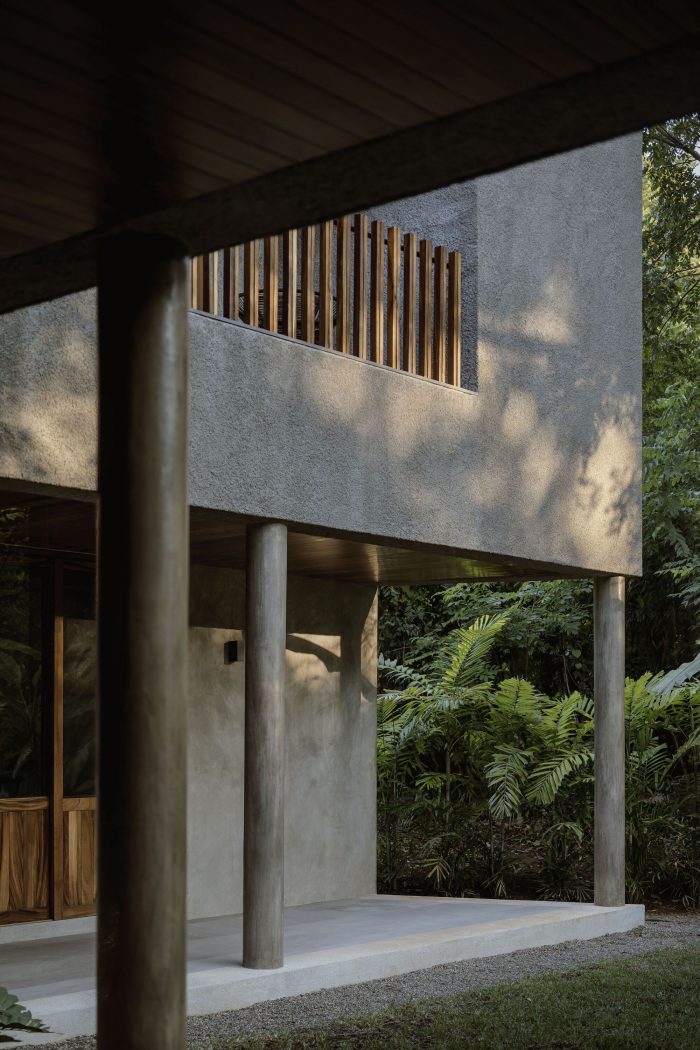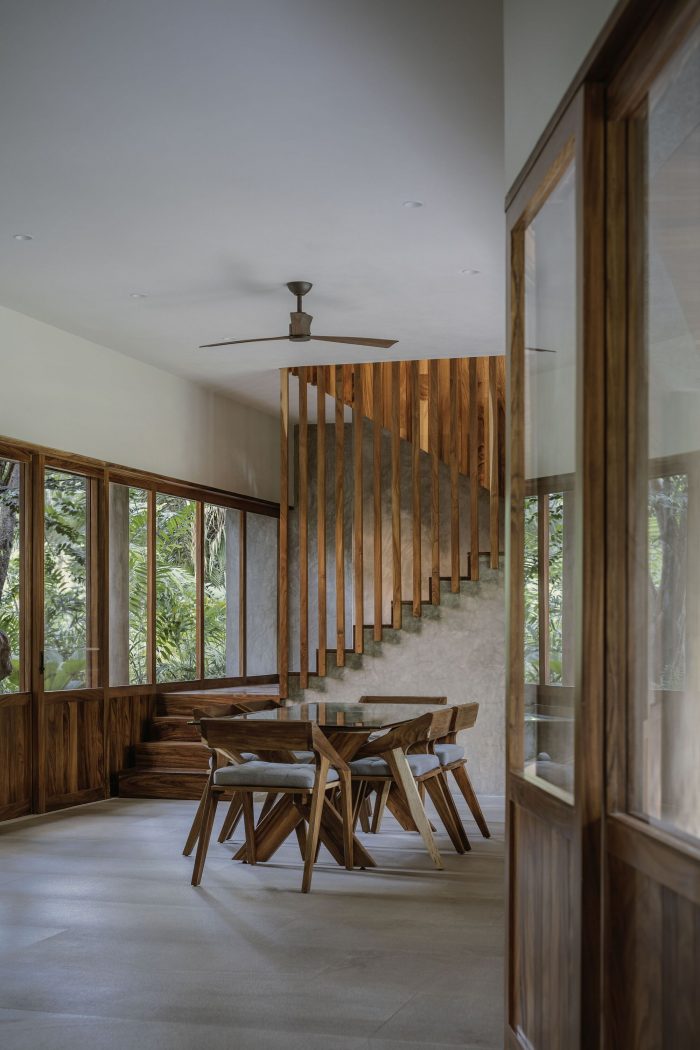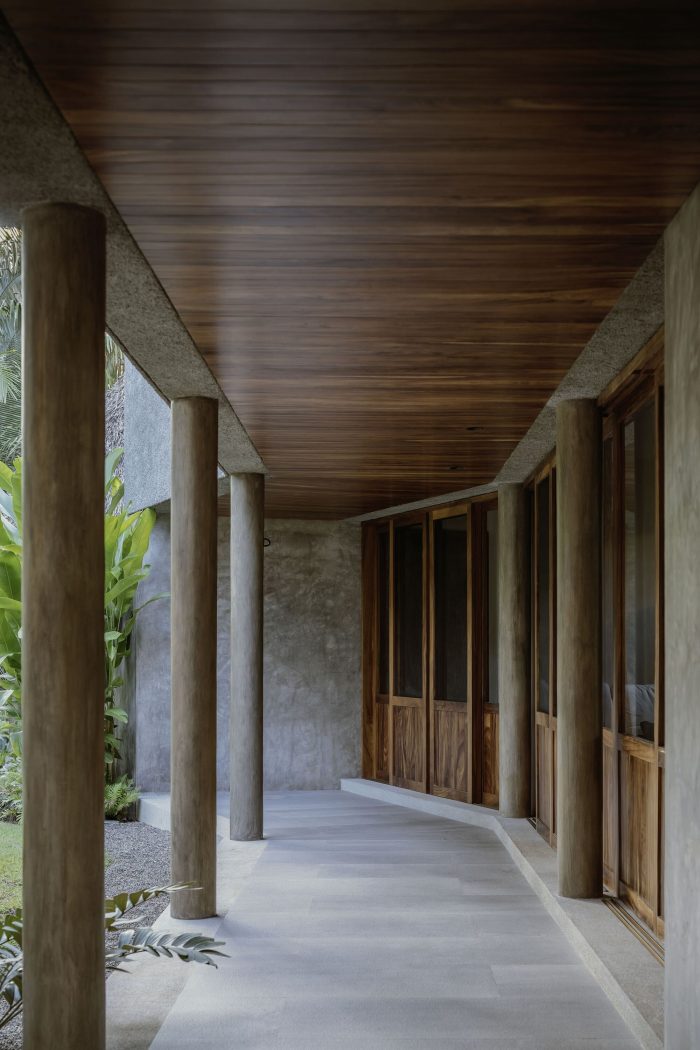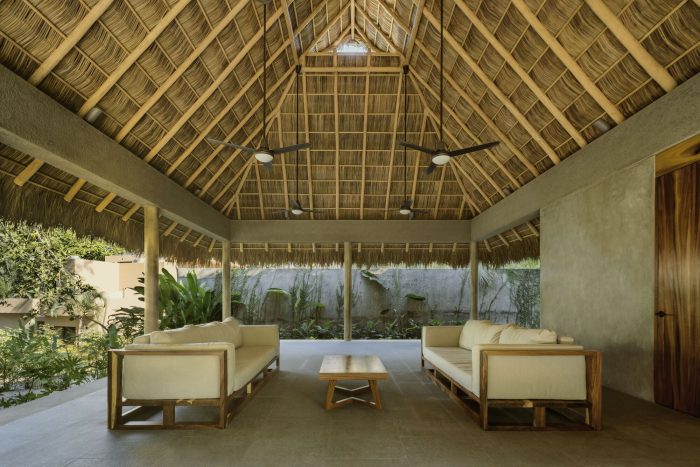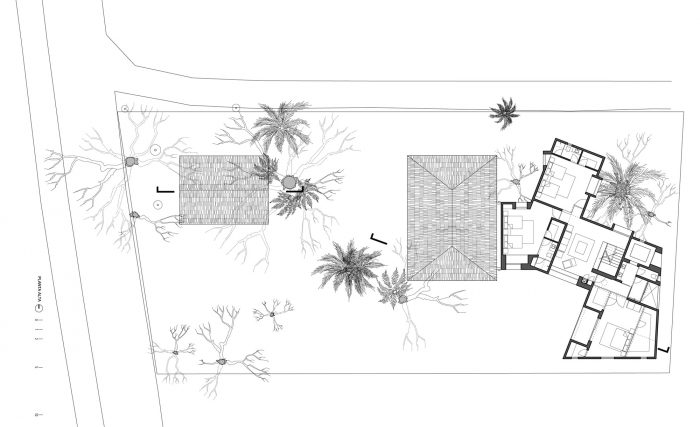离海100米,在一个私人小区的内部街道脚下,在丛林深处,有一栋房子,可供一个四口之家和游客24小时居住。植被和树木都很丰富,无花果树因其树干、树根和树枝的大小和形状而引人注目。
100 m from the sea and at the foot of an interior street of a private subdivision, in deep jungle terrain, is a house to be inhabited 24-7 by a family of 4 and visitors. The vegetation and trees are abundant, the fig trees stand out for their size and shape of trunks, roots, and branches.
房子位于地块的后面,利用前面的植被寻求隐私,并以园艺和砾石作为补充,从街道和车库到房子的路线产生。它通过一个供社会使用的棕榈树进入,并通过一个低容积的隔间来容纳鞋子,你可以进入房子的 “封闭 “日间区域。
The house is located towards the back of the lot, taking advantage of the front vegetation seeking privacy, and complementing it with gardening and gravel, a route is generated from the street and garage access to the house. It is entered through a palapa for social use, and through a low volume with a compartment to house shoes, you access the “closed” day area of the house.
由于场地的几何形状以及开放和整理开放空间的意图,平面图采取了一个破碎的形状,在无花果树和其他植被周围产生,远离邻居的视野。在底层,室内空间向阳台开放,除了作为外部空间的过渡,还可以防止日晒雨淋,并将主体量与访客体量连接起来。
The floor plan takes the form of a broken shape as a result of the geometry of the site and the intention of opening and finishing off the open spaces, generated around the fig trees and other vegetation, keeping away from the neighbor’s views. On the ground floor, the interior spaces open onto verandas that, in addition to serving as a transition to the exterior spaces, protect from the sun and rain and link the main volume with the visitor volume.
柱子和抛光的混凝土墙包含了木窗,并支撑着上层的粗糙扁平的整体体量。在内部,与帕罗塔的木制品形成对比,用扁平的浅色的木制品,目的是增加亮度,被丛林的常年阴影所减弱。在上层,与每个房间相对应,体量被打孔以放置窗户–客厅、阳台和户外淋浴,与丛林景观直接相关。
Columns and polished concrete walls contain the wooden windows and support the rough flattened monolithic volume of the upper floor. Inside, contrasting with the Parota carpentry, with the flattened light-colored ones, the aim is to increase the luminosity, diminished by the perennial shadow of the jungle. On the upper floor, corresponding to each room, the volume is perforated to place windows-living room, a balcony, and an outdoor shower in direct relation to the jungle landscape.
Architects: CoA Arquitectura
Area : 555 m²
Year : 2020
Photographs :César Béjar Studio
Architects In Charge : Francisco Gutiérrez
Collaborator : Tania Robles
City : Chacala
Country : Mexico

